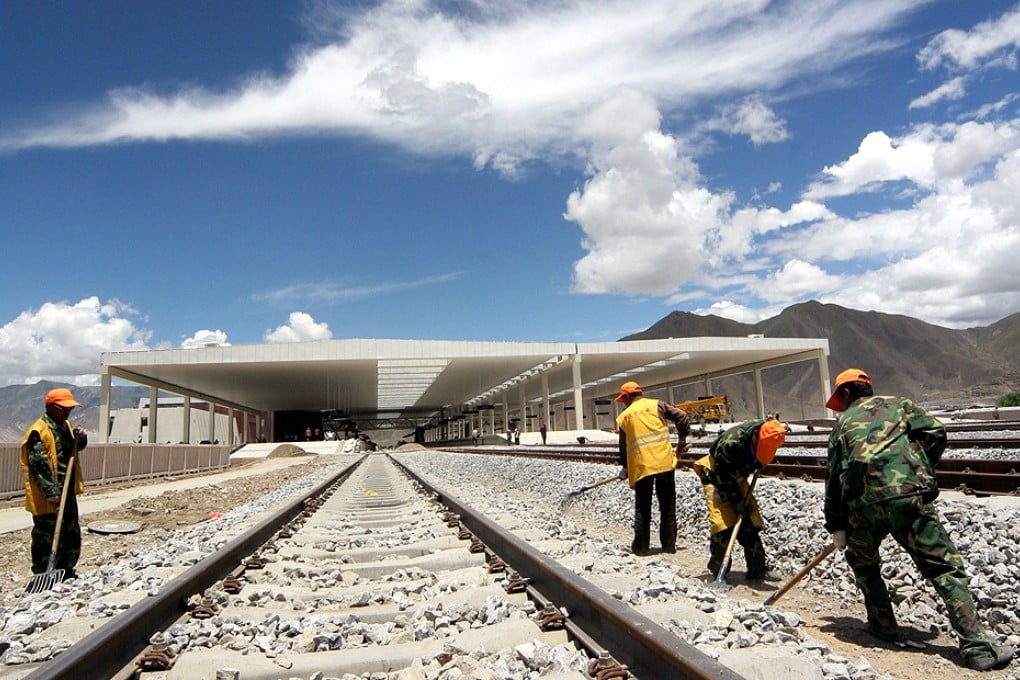China plans to extend Tibet railway line to India, Nepal borders by 2020
Connections to the borders of India, Nepal on the drawing board as Beijing looks to extend the railway line linking Tibet to the northwest province of Qinghai

China plans to extend a railway line linking Tibet with the rest of the country to the borders of India, Nepal and Bhutan by 2020 once an extension to a key site in Tibetan Buddhism opens, a state-run newspaper reported on Thursday.
China opened the railway to Tibet’s capital Lhasa in 2006, which passes spectacular icy peaks on the Tibetan highlands, touching altitudes as high as 5,000 metres above sea level, as part of government efforts to boost development.
Critics of the railway, including exiled Tibetans and rights groups, say it has spurred an influx of long-term migrants who threaten Tibetans’ cultural integrity, which rests on Buddhist beliefs and a traditional herding lifestyle.
The Global Times, published by the Communist Party’s official organ, the People’s Daily, said that an extension to Shigatse, the traditional seat of Tibetan Buddhism’s second-highest figure, the Panchen Lama, would formally open next month.
That link is scheduled for its own extension during the 2016-2020 period to two separate points, one on the border of Nepal and the other on the border with India and Bhutan, the newspaper cited Yang Yulin, deputy head of Tibet’s railways, as saying, without providing details.

China has long mooted this plan, but the difficulty and expense of building in such a rugged, remote and inhospitable region has slowed efforts.